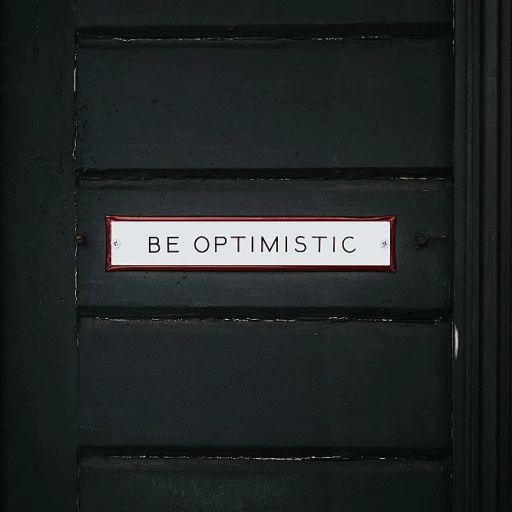Understanding the Importance of a Shared Vision
Crafting a Collective Aim for Enhanced Team Success
In today's rapidly evolving professional landscape, the importance of crafting a unified vision cannot be overstated. A shared vision serves as a guiding light, aligning team members with common goals and fostering collaboration. It helps transform a group of individuals into a cohesive unit focused on collective success.
Establishing such a vision involves thoughtful strategy and clear communication. It requires considering the team dynamics and encouraging input from all team members. Whether in a small group or a large organization, each participant’s perspective contributes to the collective vision, making it a true reflection of the team's aspirations.
One of the most significant benefits of a shared vision is its ability to strengthen trust among team members. Trust is the foundation of effective collaboration and is crucial for problem-solving and decision-making processes. When everyone is working towards the same objectives, there’s a sense of reliability and mutual support that enhances team dynamics.
The leadership team plays a pivotal role in facilitating this process, guiding discussions and ensuring that every voice is heard. Leaders need to be skilled in communication, using activities and games to engage participants, stimulate creativity, and build trust. Leadership activities can further enrich the group's experience, paving the way for a stronger, more effective team.
Indeed, as the landscape of work continues to shift, integrating upskilling opportunities within vision-building activities becomes increasingly important. Upskilling enhances team bonding and offers team members the opportunity to develop new skills or refine existing ones. Incorporating this into building exercises not only aligns individual goals with the team vision but also strengthens the organization's long-term capacity for growth.
Creating a vision is not a one-time activity but a continuous journey of adaptability and shared effort. Resources such as
enhancing skills through behavioral coaching can support teams in further aligning personal and collective objectives, ensuring that everyone is moving forward together.
Identifying Key Challenges in Creating a Shared Vision
Pinpointing Common Obstacles
Understanding the hurdles in creating a shared vision is critical for team success. Teams often encounter challenges that impede collaboration and complicate the process of aligning towards common goals. Here, we explore these common obstacles and strategies to overcome them.
- Diverse Team Dynamics: With a blend of personalities and skills, teams may struggle with communication and trust. It’s essential for participants to actively engage in open dialogue to foster transparency.
- Ineffective Communication: Miscommunication can derail the vision setting process. Building communication skills is key and involves learning to articulate thoughts clearly and listening effectively.
- Lack of Leadership: Strong leadership is vital in guiding team members towards a shared vision. Leaders should facilitate discussions, encourage participation, and support decision-making processes.
- Resistance to Change: Some team members may be hesitant to embrace new ideas or strategies. Building trust through team building games and activities helps in easing such transitions.
- Vague Goals and Objectives: Ambiguity in vision statements or goals can lead to confusion. It’s important to have a clear vision board or strategy that outlines specific objectives.
Overcoming these challenges requires engaging in strategic team building exercises to align on the vision. These building activities foster collaboration and encourage diverse input from team members, enhancing both trust and communication. Developing a cohesive strategy to address these obstacles positions a team more effectively towards realizing a shared vision. As discussed in an insightful blog about
soft skills enhancement, honing essential skills such as communication can greatly aid in overcoming these barriers.
Effective Team Building Exercises for Vision Alignment
Enhancing Team Dynamics Through Targeted Exercises
Effective team building exercises are crucial for aligning the team vision and fostering a collaborative spirit among participants. These activities help break down communication barriers, address challenges, and cultivate trust within the team. By engaging in carefully chosen exercises, teams can work towards a unified vision while enhancing their problem-solving skills.
One approach to consider is the use of communication games. These activities focus on improving communication skills by requiring team members to articulate ideas clearly and listen actively. For instance, an activity where teams need to build a structure with limited information can promote decision making and strategy development while reinforcing the importance of a shared vision.
Vision boards are another effective tool. By collectively creating a vision board, team members can visualize the goals and aspirations of the group. This exercise encourages participants to contribute ideas and discuss how individual goals align with the overall team vision strategy. Vision boards can also serve as a tangible reminder of the shared objectives, promoting accountability and continuous collaboration.
Trust-building exercises are vital for establishing a foundation where team members feel comfortable sharing ideas and taking risks. In a trust-building activity, such as a group problem-solving challenge, members must rely on each other's strengths to reach a common goal. These activities often reveal the diverse skill sets within the team and underscore the role of each team member in the collective journey towards a shared vision.
Managing group size is important to maintain engagement and effectiveness in building exercises. Small groups tend to facilitate better communication and personalized feedback, allowing leadership teams to address individual challenges while promoting active participation.
Leadership plays a pivotal role in facilitating these exercises. Leaders are essential in setting the tone, ensuring that all voices are heard, and guiding the group towards alignment. This not only involves leading by example in collaboration and open communication but also actively participating in building activities to understand team dynamics better.
For those looking to further integrate professional development with vision alignment, understanding career alignment through upskilling can be beneficial. By aligning personal growth with team goals, the overall impact of these exercises can be maximized, leading to enhanced team performance and cohesion across all levels of the organization.
Explore this resource for more insights on career alignment.
Role of Leadership in Facilitating a Shared Vision
The Guiding Hand of Leadership in Building a Cohesive Team Vision
In the dynamic process of fostering a shared vision, leadership plays a pivotal role. Leaders act as the navigational compass within a team, guiding members through challenges while instilling trust and collaboration. This helps to develop a cohesive group strategy.
Effective leadership involves not only setting clear goals but also ensuring open lines of communication among team members. Communication skills are vital, as they affect how ideas are shared and how different perspectives are integrated into the group’s decision-making process.
Leadership influences team dynamics by:
- Facilitating trust-building activities that encourage open dialogue and mutual respect. This could involve strategic games designed to enhance problem-solving skills and promote collaboration.
- Encouraging meaningful team building exercises, such as crafting a vision board. This allows team members to visualize their shared objectives and align their personal goals with the organizational vision.
- Being attentive to the varying group size and dynamics. Tailoring activities to suit small groups versus larger teams ensures that all participants are actively engaged and the team’s vision is inclusive.
The leadership team must also focus on fostering a sense of unity and cooperation. This is achieved through structured team bonding sessions that not only entertain but reinforce the essence of the shared vision.
Moreover, leadership is central in integrating upskilling initiatives with vision development. By aligning training opportunities with the vision strategy, leaders can enhance participants' capabilities while ensuring that the overall team building efforts are directed towards achieving long-term goals.
Leaders should regularly assess and adapt their approach, ensuring that the activities remain relevant to the evolving needs of the team. By doing so, leadership will be instrumental in overcoming any challenges encountered in creating a shared vision.
Integrating Upskilling with Vision Development
Blending Vision Development with Skill Enhancement
In the context of creating a shared vision within teams, upskilling stands as a pivotal component. As teams navigate through their collective goals, they often encounter challenges that necessitate strategic communication and effective problem-solving. To aid in this journey, coupling upskilling with vision-building exercises can yield significant dividends.
Facilitating a shared vision demands not only clarity and alignment but also the cultivation of essential skills among team members. This includes honing communication skills, decision-making capabilities, and group collaboration techniques. These competencies are vital for nurturing trust and encouraging participation in team dynamics.
Engaging in upskilling activities tailored to vision strategy development empowers both leadership and participants. It enables them to effectively contribute to the creation and evolution of vision boards, vision statements, and other collaborative outputs. By doing so, teams can address the challenges of disparate goals and align their efforts toward a unified direction.
Moreover, small groups can engage in targeted games and building activities that enhance specific skills within the group. For instance, leadership exercises can encourage team bonding, improve trust, and facilitate an understanding of group challenges. These activities typically span several minutes and encourage active participation, thereby reinforcing the shared vision.
Ultimately, integrating upskilling with vision building activities not only aligns team members with the organization's overarching goals, but it also prepares them to handle potential obstacles with a refined skill set. Such an approach fosters a cohesive team environment where members are equipped to contribute to a thriving collaborative atmosphere.
Evaluating the Impact on Team Dynamics and Performance
Understanding the importance of a shared vision is only the beginning; measuring its impact is vital for long-term success. Team dynamics can shift dramatically when a shared vision is successfully communicated and embraced. Engaging in team building activities lays a solid foundation, but how do we assess the ripple effects on team performance?
One effective method is through regular feedback sessions. Gathering insights from team members regarding participation in team building exercises can provide valuable information on how the activities have influenced collaboration and trust. These sessions can be conducted in small groups to accommodate various group sizes, allowing for candid communication and promoting a healthy team vision.
A shared vision can empower the team to self-organize, with leadership stepping in as a facilitator rather than a director. This approach nurtures an environment where decision-making and problem solving are shared responsibilities, encouraging active participation from all team members. Consequently, this enhances not only decision-making efficiency but also communication skills across the group.
Implementing a structured method to track progress is beneficial. Develop a vision statement or use a vision board as a visual reminder of the team's goals. This not only aids in maintaining focus but also allows the leadership team to measure how effectively the shared vision aligns with daily operations and broader business objectives.
Trust building games and activities should also be part of the measurement process, as they foster team bonding. Allocating minutes within regular meetings to review outcomes can consolidate the shared vision and its influence on the team’s collective achievements.
In conclusion, evaluating a shared vision's impact demands ongoing commitment and adaptability. Through strategic communication and tailored building activities, teams can develop a vision strategy that propels them to new heights, ultimately contributing to their success in achieving their goals.













